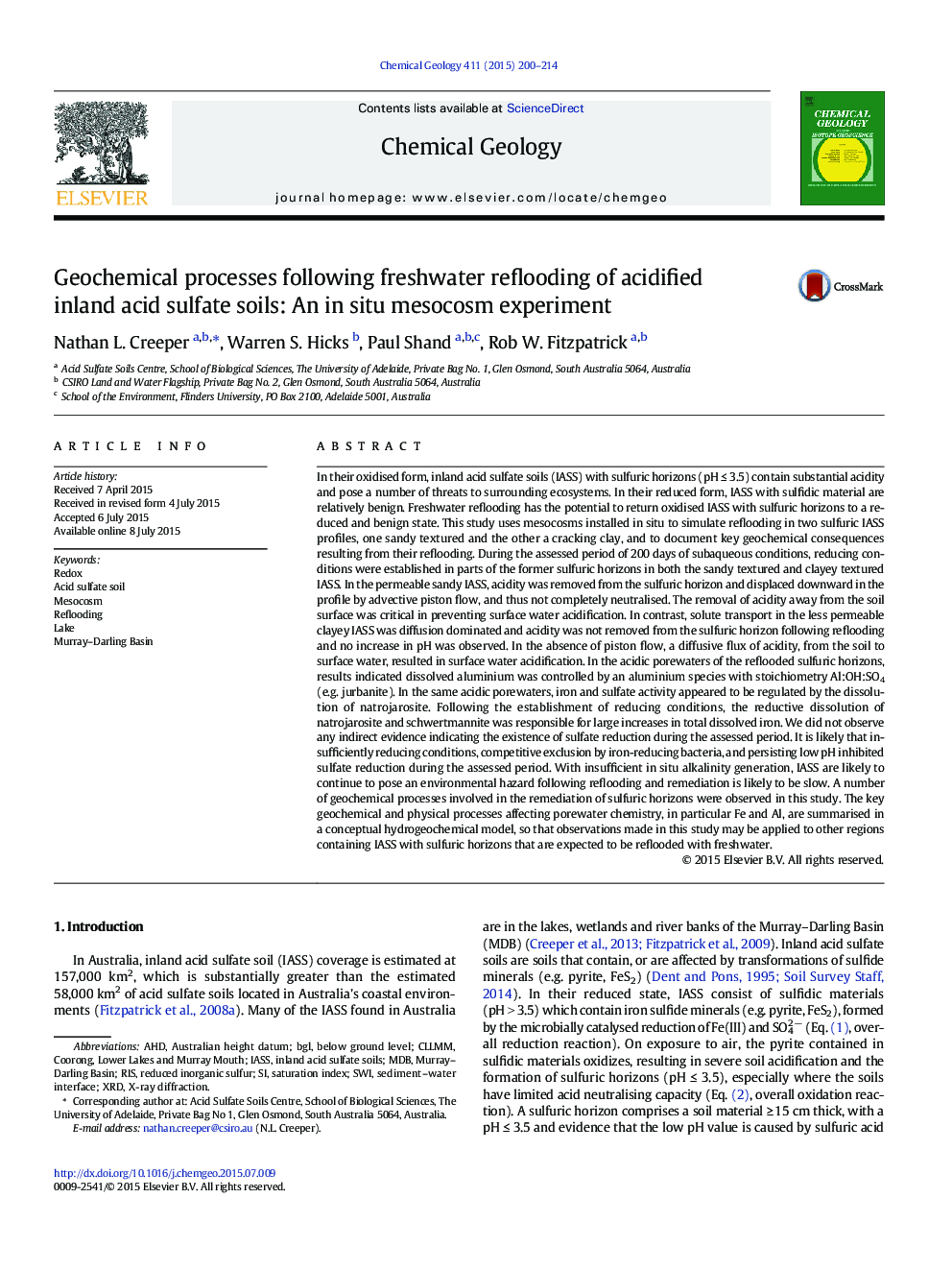| کد مقاله | کد نشریه | سال انتشار | مقاله انگلیسی | نسخه تمام متن |
|---|---|---|---|---|
| 6436336 | 1637563 | 2015 | 15 صفحه PDF | دانلود رایگان |
- Mesocosms installed in situ to simulate a natural post-drought reflooding event.
- Biogeochemical transformations following freshwater reflooding of sulfuric material.
- Recovery of sulfuric material following reflooding is likely to take several years.
- Management of acid sulfate soils in environmentally sensitive Ramsar wetlands.
In their oxidised form, inland acid sulfate soils (IASS) with sulfuric horizons (pH â¤Â 3.5) contain substantial acidity and pose a number of threats to surrounding ecosystems. In their reduced form, IASS with sulfidic material are relatively benign. Freshwater reflooding has the potential to return oxidised IASS with sulfuric horizons to a reduced and benign state. This study uses mesocosms installed in situ to simulate reflooding in two sulfuric IASS profiles, one sandy textured and the other a cracking clay, and to document key geochemical consequences resulting from their reflooding. During the assessed period of 200 days of subaqueous conditions, reducing conditions were established in parts of the former sulfuric horizons in both the sandy textured and clayey textured IASS. In the permeable sandy IASS, acidity was removed from the sulfuric horizon and displaced downward in the profile by advective piston flow, and thus not completely neutralised. The removal of acidity away from the soil surface was critical in preventing surface water acidification. In contrast, solute transport in the less permeable clayey IASS was diffusion dominated and acidity was not removed from the sulfuric horizon following reflooding and no increase in pH was observed. In the absence of piston flow, a diffusive flux of acidity, from the soil to surface water, resulted in surface water acidification. In the acidic porewaters of the reflooded sulfuric horizons, results indicated dissolved aluminium was controlled by an aluminium species with stoichiometry Al:OH:SO4 (e.g. jurbanite). In the same acidic porewaters, iron and sulfate activity appeared to be regulated by the dissolution of natrojarosite. Following the establishment of reducing conditions, the reductive dissolution of natrojarosite and schwertmannite was responsible for large increases in total dissolved iron. We did not observe any indirect evidence indicating the existence of sulfate reduction during the assessed period. It is likely that insufficiently reducing conditions, competitive exclusion by iron-reducing bacteria, and persisting low pH inhibited sulfate reduction during the assessed period. With insufficient in situ alkalinity generation, IASS are likely to continue to pose an environmental hazard following reflooding and remediation is likely to be slow. A number of geochemical processes involved in the remediation of sulfuric horizons were observed in this study. The key geochemical and physical processes affecting porewater chemistry, in particular Fe and Al, are summarised in a conceptual hydrogeochemical model, so that observations made in this study may be applied to other regions containing IASS with sulfuric horizons that are expected to be reflooded with freshwater.
Journal: Chemical Geology - Volume 411, 14 September 2015, Pages 200-214
